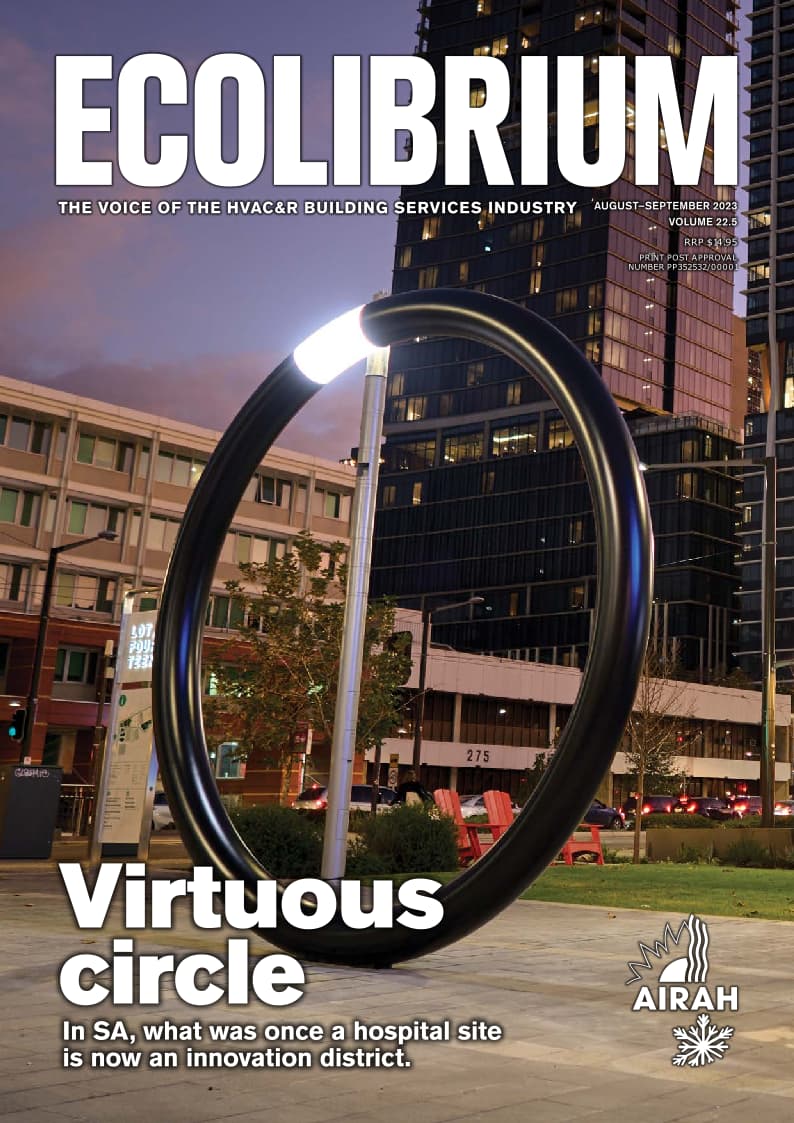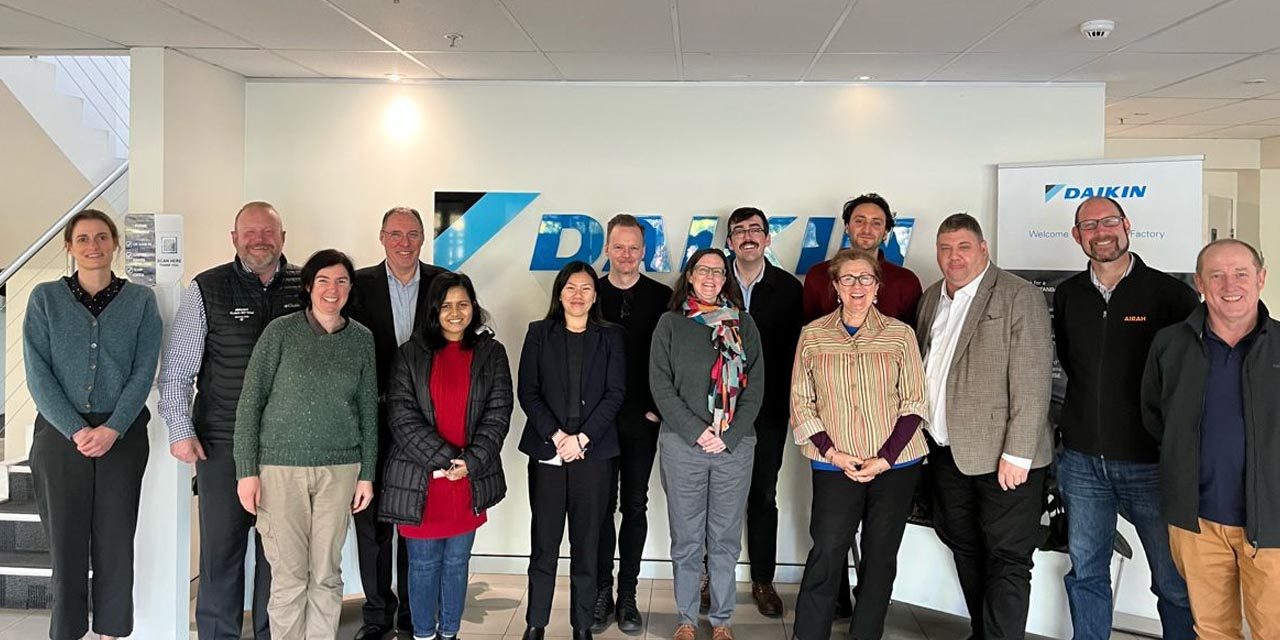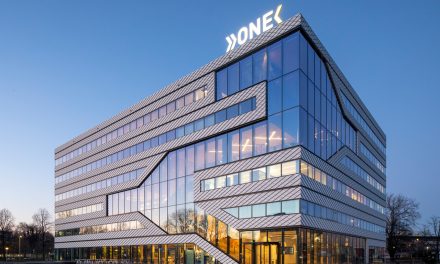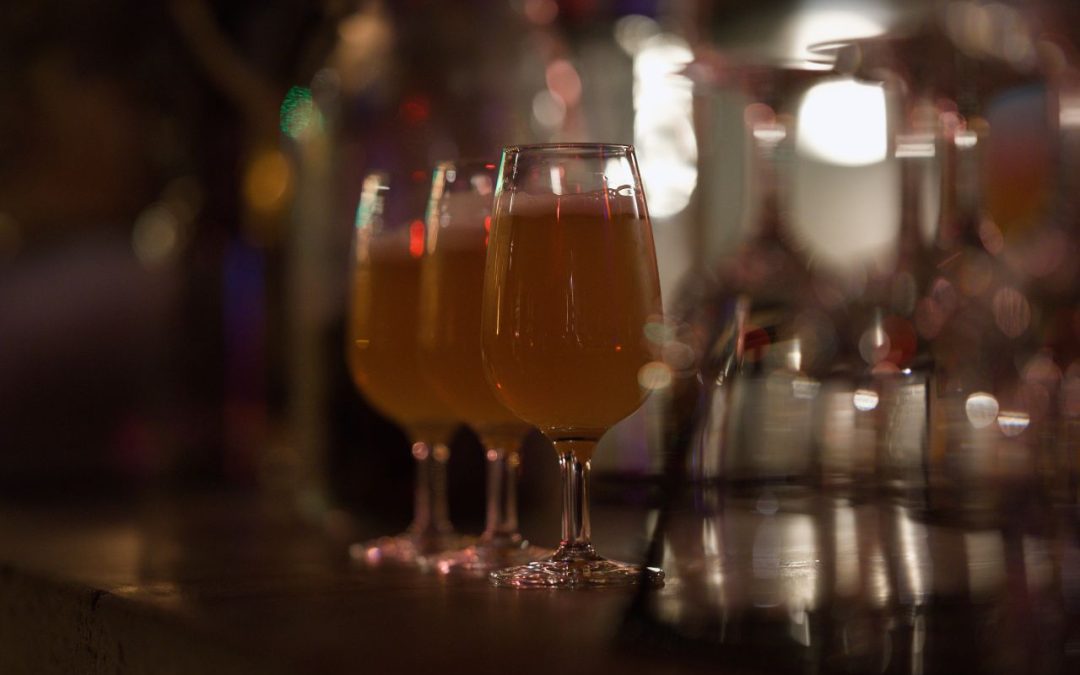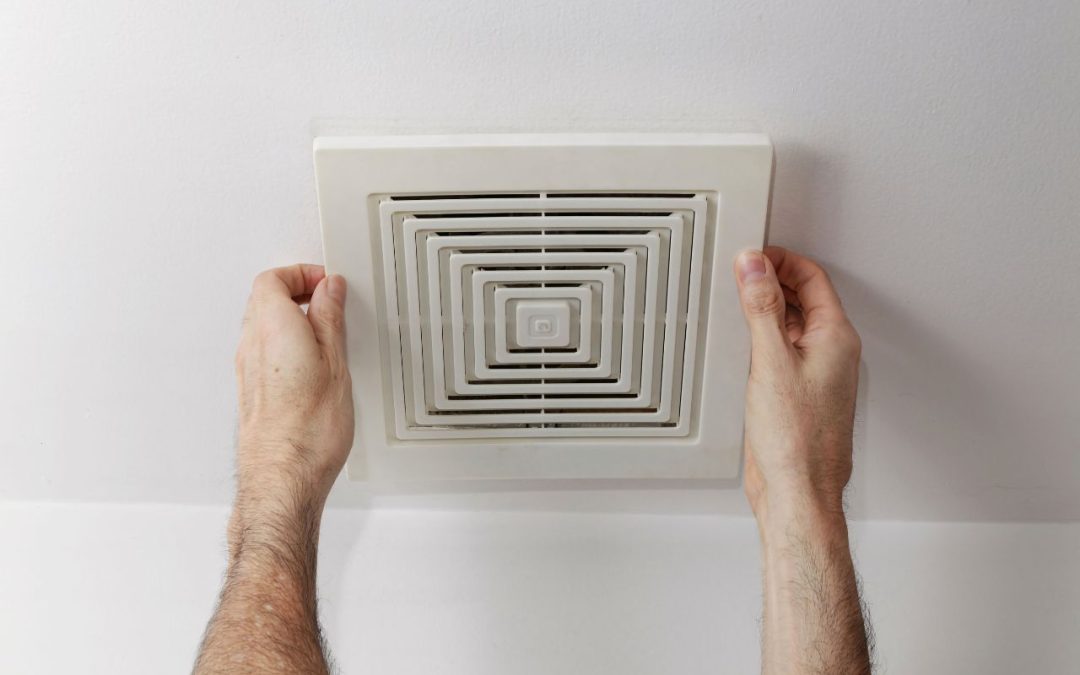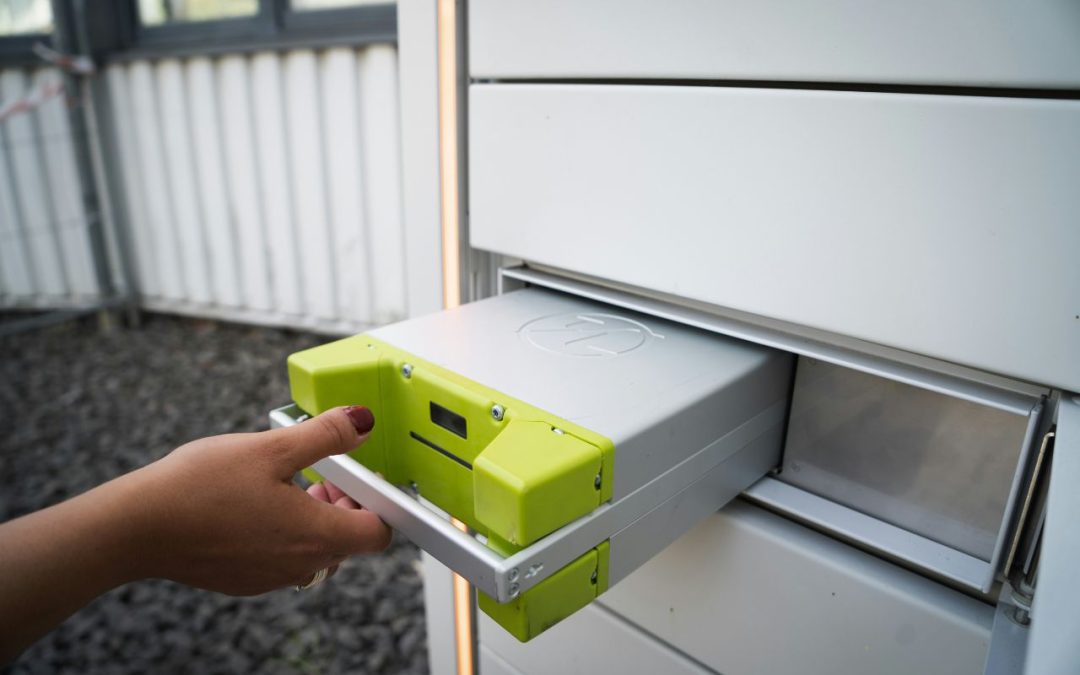In July, industry stakeholders visited the Daikin factory in Sydney to better understand the challenges and opportunities around producing low‑embodied‑carbon products.
In recent years, embodied carbon (EC) has emerged as a major issue in the built environment.
The principle is simple. As the grid decarbonises, buildings produce fewer operational emissions. But the materials used in buildings also contain emissions. These are generated during extraction, production, transport and
installation.
And embodied emissions are significant. Steel and cement production are estimated to represent around 7 per cent of global emissions each.
Building services – which includes HVAC and refrigeration, fire safety, lifts, escalators, and lighting – are a smaller piece of the EC pie, but still important. Collectively, they are estimated to represent up to 15 per cent of upfront carbon in commercial buildings.
In 2022, the Materials and Embodied Carbon Leaders’ Alliance (MECLA) formed a working group dedicated to building services. And in July, the group – chaired by AIRAH – was invited by Daikin to its factory in Chipping Norton, Sydney, to gain a firsthand view of the challenges and opportunities around reducing EC.
The tour group included participants from the MECLA secretariat; NABERS; the Australian Building Codes Board; manufacturing associations AREMA and FMA-ANZ; the Department of Climate Change, Energy, the Environment and Water; EPD Australasia; AIRAH – and, of course, Daikin.
EC in building services – it’s complicated!
Through a guided tour of the factory floor and presentations from Daikin staff, attendees gained a better appreciation of the complexity of building services equipment.
An HVAC system can contain thousands of parts, and the supply chains for these parts are often many layers deep and highly dynamic, depending on availability and price.
This makes measurement of embodied carbon problematic. An environmental product declaration (EPD) – the gold standard for measuring embodied carbon in products – lasts five years, while the embodied carbon of a product may change significantly from month to month.
There is understandably some reluctance to invest in EPDs if they are not accurate. In the worst case, they could drive purchasing decisions but not give us a lower-EC building. There is also the possibility of less‑reputable companies gaming the system – for example, by claiming longer product life – to reduce the embodied carbon numbers for their offerings.
Furthermore, building services impacts both embodied and operational emissions, and both must be considered. What is the benefit of purchasing a low-EC product if it has poor energy efficiency? Some stakeholders note that there is still a lot of work to be done to reduce operational emissions; they insist this is where we should focus our efforts right now.
The way ahead for EC
But despite all this, the need for action on EC remains if we are to reach net zero. And there are some paths forward.
One tool getting good uptake is the TM65 methodology developed by CIBSE in the UK and amended for use in Australia as part of the Green Star rating system. TM65 measures EC in building services, and is not as onerous as an EPD. NABERS is also developing a system for EC – watch this space.
Another option would be to develop industry-average EPDs for some products, ideally the ones that have the biggest impact on embodied emissions. This would at least help designers take EC into account in their design decisions.
More broadly, even if we can’t accurately measure EC in every part of a complex HVAC&R system, that shouldn’t halt all forward progress. Modern slavery regulations have shown us that supply chains may be complicated, but they are not unfathomable. The first step is better understanding where products and materials come from, and asking suppliers for low-EC options.
The event was conceived as an opportunity for conversation between key stakeholders, and it certainly provided that. Many thanks to Daikin for hosting the visit.
Like to know more?
For more information about MECLA and the building services working group, go to mecla.org.au
